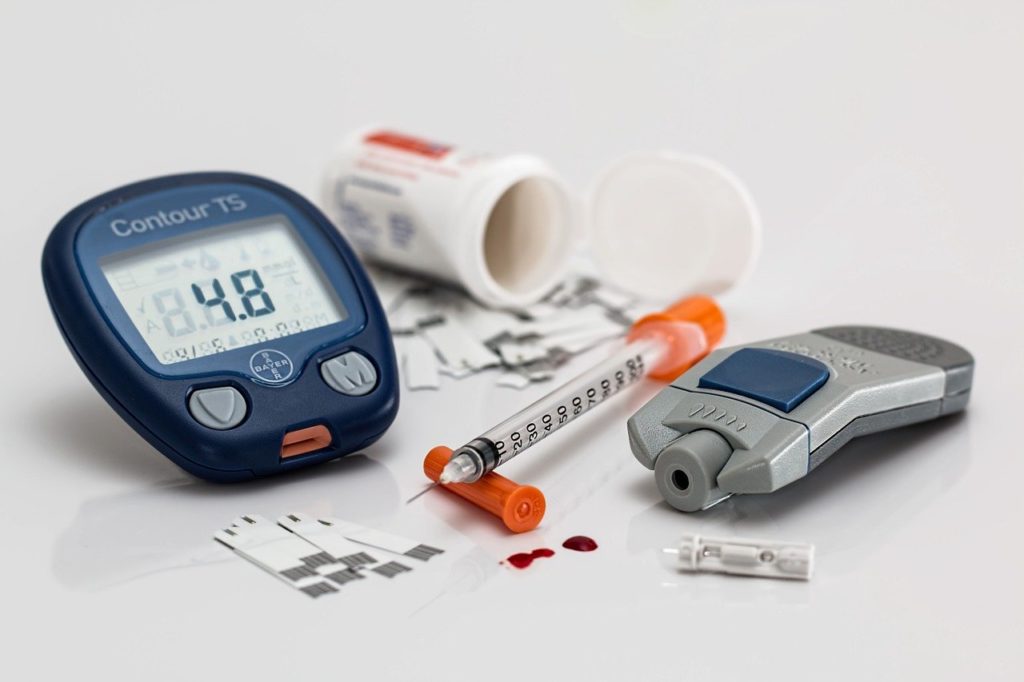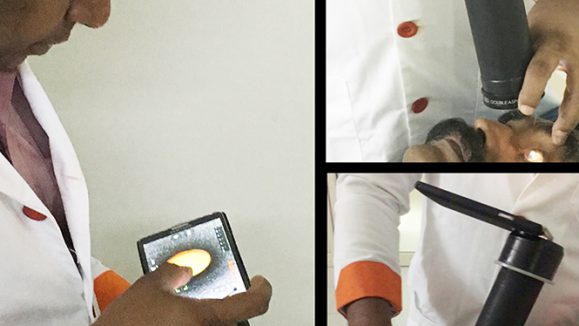For millions of people around the world, diabetes is a frustrating and finicky condition. It can significantly diminish quality of life and can be life-threatening — and it also requires constant monitoring and testing. Injections, screening, calculating glucose levels and more, are daily experiences for diabetes patients.
For diabetics, the constant and detailed care required to maintain their health is often overwhelming, especially for the newly diagnosed. It’s becoming an even greater issue for medicine, as millions more are diagnosed every year. So, what if there was a way to alleviate some of the frustration, fear and stress of diabetes?
That’s the aim of RetinaRisk, an Icelandic company determined to improve quality of life for sufferers of diabetic retinopathy (DR). This condition is one of the most common eye diseases encountered on a daily basis by clinicians and it’s silent but deadly to eyesight, often not being caught until irreversible damage is done.
The condition can develop in anyone who has type 1 or type 2 diabetes. The longer one’s diabetes is uncontrolled, the more likely DR will develop. This is due to sugar accumulating in the blood to the extent that it causes blockages in the vessels connected to the retina. The eye then attempts to form new blood vessels to compensate, but these fail to develop properly.
Finding Diabetic Damage Before It’s Too Late
Diabetic retinopathy is insidious, as it does not present symptoms during its early stages. As the disease progresses, spots or dark strings will appear, blurred and impaired vision will develop, the ability to see color will be impaired, and dark or empty areas in vision may appear. Ultimately, if untreated, total vision loss can occur.
The trauma doesn’t stop here for some patients, as DR can lead to further complications. Vitreous hemorrhaging, retinal detachment and glaucoma can all occur from the disease.
The onset of symptoms usually occurs when the damage to the eyes is already considerable and irreversible. This makes routine screening for diabetic patients crucial, as it can stop DR in its tracks, catching the disease in its infancy when the damage can be slowed or stopped. This is the aim of RetinaRisk, to improve screening — as well as patient outcomes.
The company was founded in 2009 by Prof. Thor Aspelund, Dr. Arna Gudmundsdottir and Prof. Einar Stefansson. Prof. Apselund is a biostatistician who is currently leading Iceland’s response to the coronavirus pandemic. Dr. Gudmundsdottir is a product development and clinical testing specialist, and Prof. Stefansson is an ophthalmologist and entrepreneur.
RetinaRisk has developed an algorithm that can identify a patient’s risk of developing DR over a 12-month period. This is based on a patient’s clinical risk factors including the type and duration of diabetes, Hb1Ac, blood pressure, gender and retinopathy stage. This algorithm is then used via two systems.

The first system is the RetinaRisk Application Programming Interface, which allows users to generate individualized risk scores for DR. It can also be used as a dedicated support tool by recommending appropriate intervals between screening visits based on an individual’s risk profile.
The second is the RetinaRisk app, which is designed to empower patients to take more control over DR. The app displays all the information a patient needs to manage their DR profile and make adjustments to their behavior, medicine interactions, among others, to improve their health. It also includes detailed guidelines and useful information on DR and diabetes in general.
Fighting the Fear Caused by Diabetes
RetinaRisk Project Manager Ægir Þór Steinarsson fervently believes the company’s products will revolutionize the way DR is treated. Not only that, it will have a tremendously beneficial impact on patient health and well being.
“Patients who have just been diagnosed with serious levels of diabetic retinopathy and they’re petrified, they are absolutely petrified. Our mission is for that to never happen,” Mr. Steinarsson said.
“We’re taking something that was developed for clinicians and hospital systems and then we’re transcribing it over to the general user,” he added.
This shift from clinic to patients is being facilitated in part by the growth of telemedicine technology during the coronavirus pandemic. Clinicians and patients are now far more likely to take up novel telemedicine. Mr. Steinarsson reports that RetinaRisk is experiencing a considerable uptake in interest.
He estimates that ophthalmology in general has been propelled five years into the future, thanks to the coronavirus. RetinaRisk is well positioned as a result, the company’s systems are highly developed and perfect for social distancing conditions. However, for Mr. Steinarsson, his company’s main selling point is that of empowerment.
“People with diabetes have higher rates of depression because it is an extremely complex disease and you have to almost be a mathematician just to go through the day — you have to calculate your food, your insulin intake, etc.,” Mr. Steinarsson said.
“It’s important to empower people because that is one of the most important tools in good diabetes management, just being empowered and informed,” he said.
“Diabetic retinopathy goes from nothing to serious, there are no symptoms during the early stage, what we do is add breathing space for the patient,” Mr. Steinarsson added.
Editor’s Note: For more information on the app, visit www.RetinaRisk.com.



